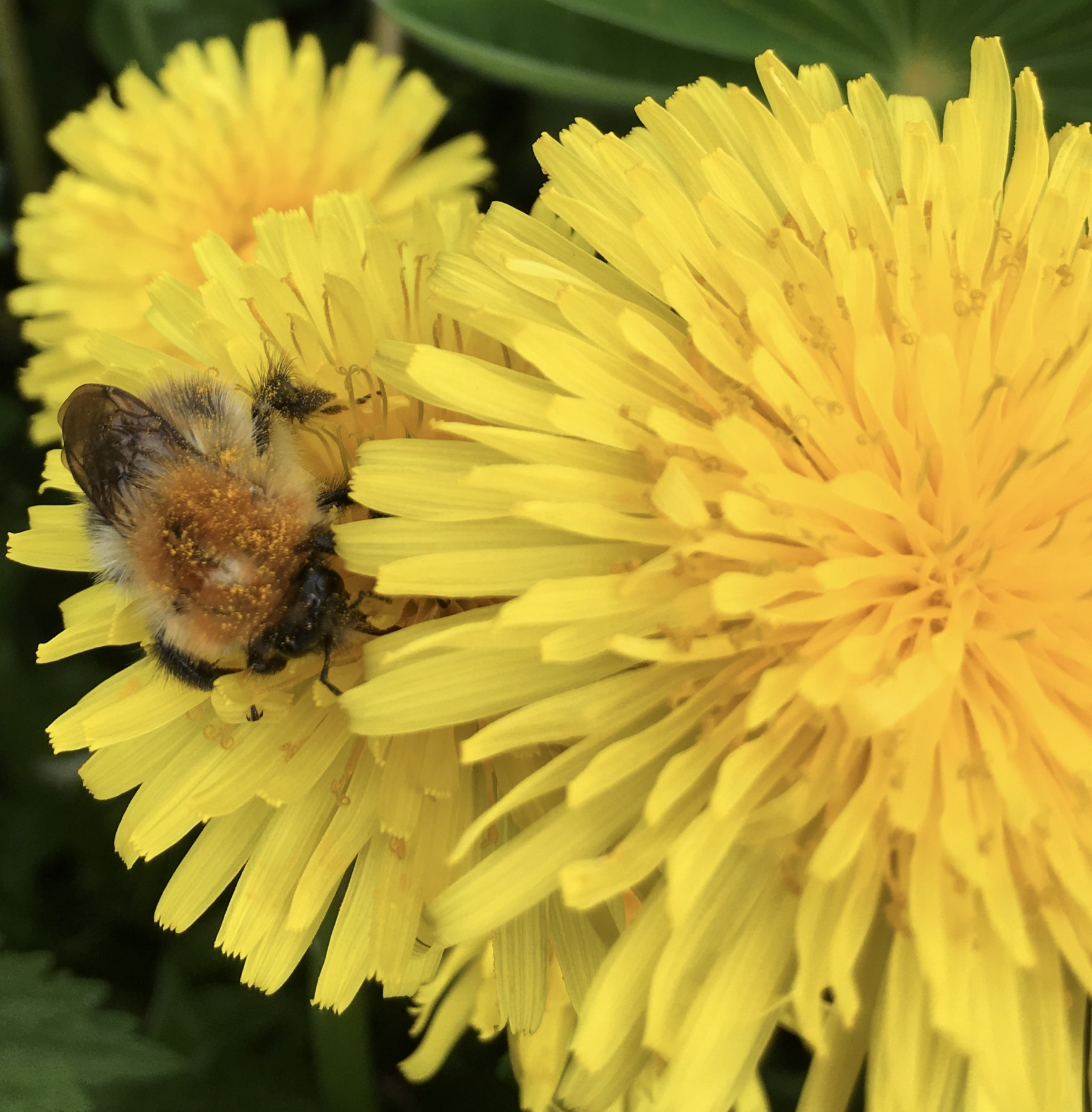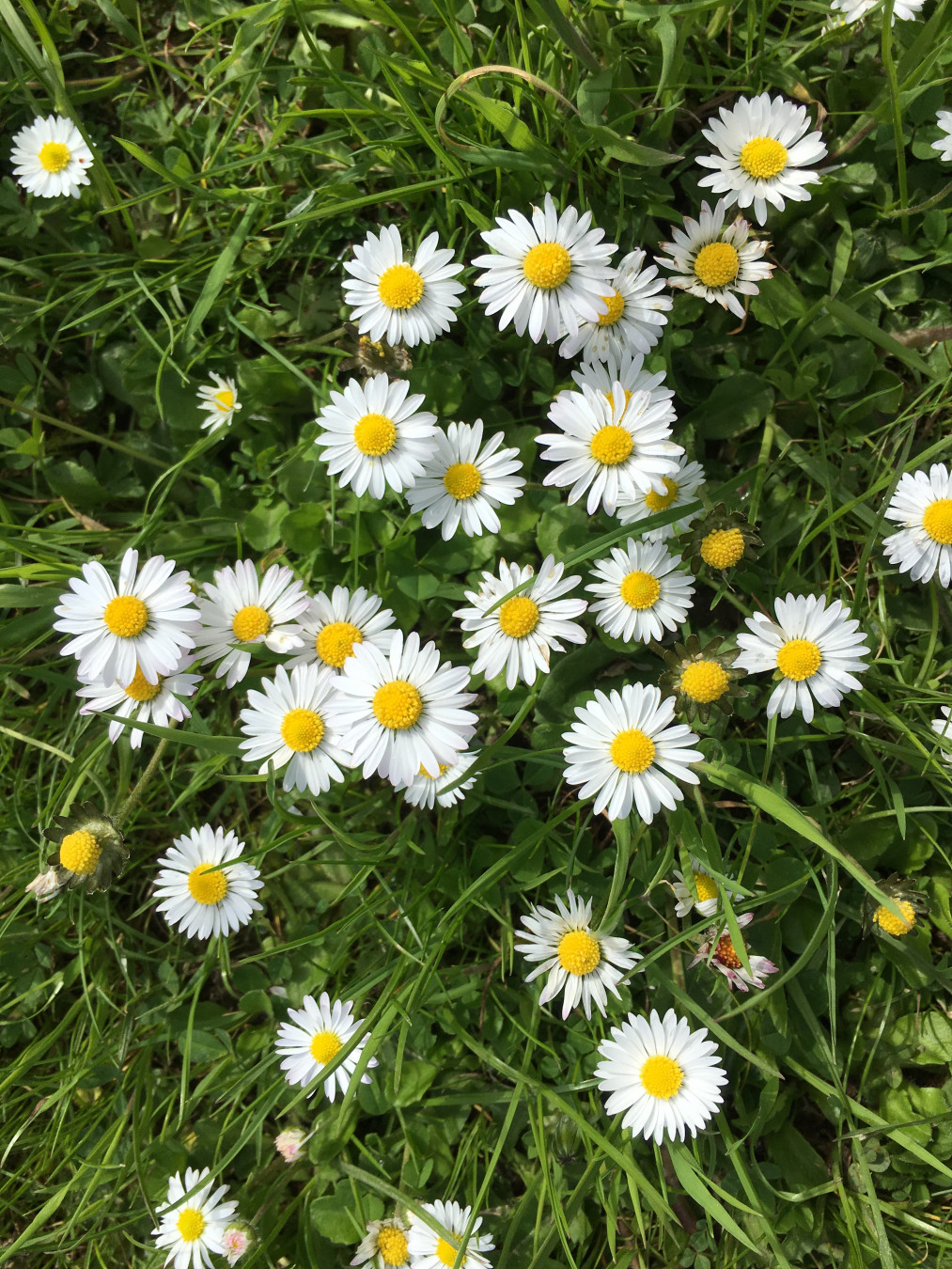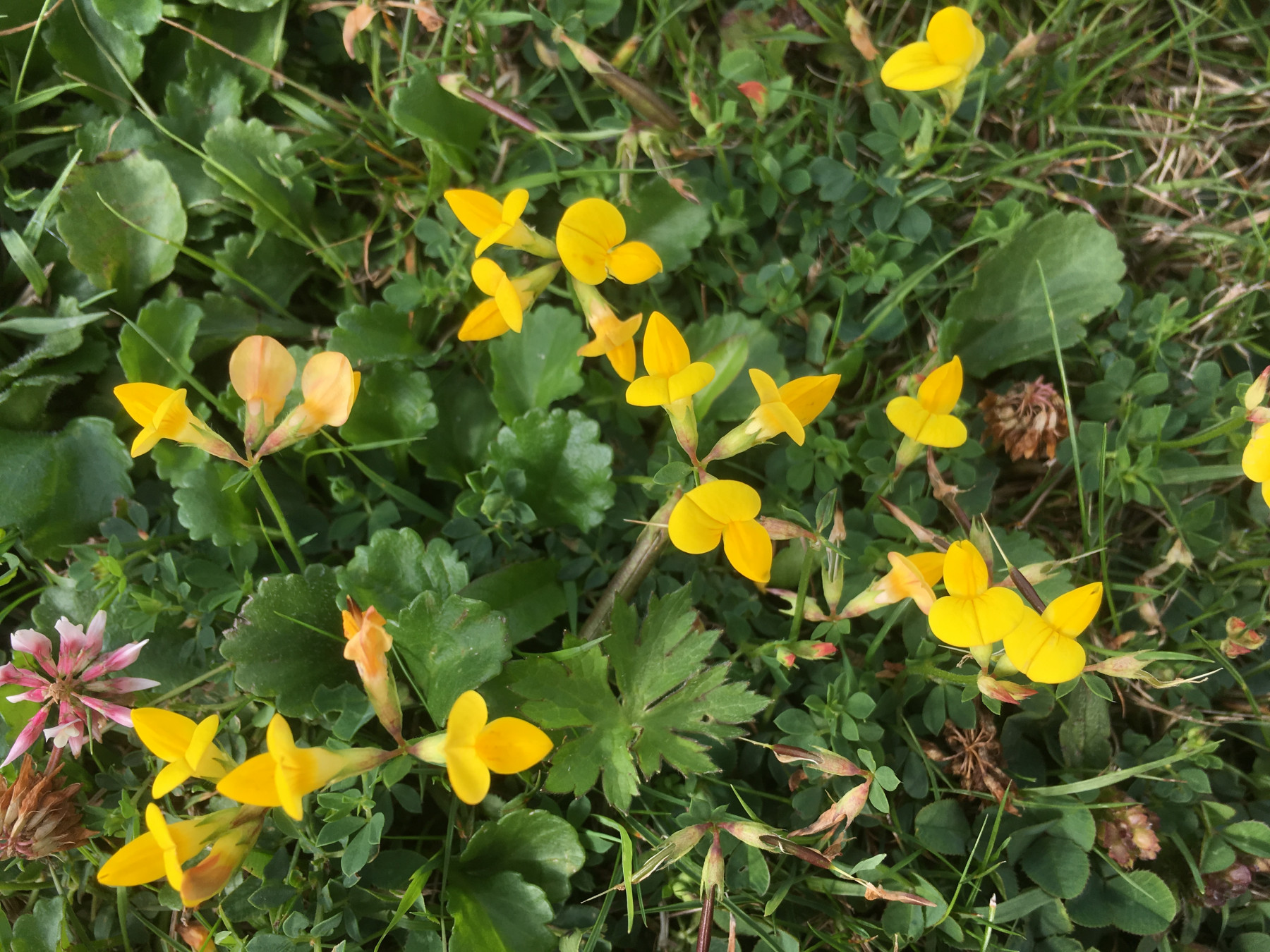
Jean Vernon explains how going low-mow is good for your garden’s biodiversity and especially your garden pollinators
If you’ve seen the call for no-mow May you might be wondering what it’s all about?? So, let me explain. No-mow May is a bandwagon that anyone with a garden can jump on. It’s a call to let the lawn grow longer, but it’s not just about the grass. Unless you’ve got the perfect bowling green lawn, the chances are that some of the green in your garden lawn is made up of some other plants. Often the more resilient things like white and red clover and birds foot trefoil. Just these three plants will keep your lawn green in a drought and if you let them flower, which is the whole point of No-mow May, they will provide precious protein rich pollen and sugar rich nectar to fuel and feed your pollinator pals.
Lawn flowers
As a child I loved to see the daisies in the lawn. I made daisy chains and garlands that I wore in my hair and I picked the pretty white and yellow flowers for my miniature gardens and posies. They are wild flowers and the perfect landing pads for our pollinating friends that can alight on the flower and then feed from the central tubes rich in pollen and nectar.

Let the lawn grow longer and see what flowers you might be surprised. One thing you will see is an increase in pollinators. Different wildflowers attract different species. Short tongued bees, hoverflies and flies feed from different flower shapes than the longer tongued species. But it’s not all about the flowers. Some of our native wildflowers and grasses are important plants for larval food. Butterflies and moths have very specific needs in terms of the plants where they can lay their eggs. Each species needs particular plants and if those plants are not present there is no food for their larval stage and they will fail to reproduce. A lawn rich in grass species and wildflowers is a great place for pollinators to feed and breed.
Fuel save
By reducing the times you cut your lawn this summer you will cut down on your fuel bills, unless you use a hand push cylinder mower that is powered by elbow grease alone. You can mow paths through a larger area and allow the rest of the lawn to grow and flower. That provides a route through the garden but leaves longer grass and wildflowers for the wildlife and especially the pollinators. Or you could leave a third of the lawn to flower in May and then choose a different section to flower in June and July. Later flowering areas are essential food source for a range of pollinators that emerge and are active in mid to late summer. Many of our carder bumblebees forage into September and some of the rare bee species need flowers rich in food right up until early autumn.
Lawn Weeds

Not everyone can see the beauty in lawn flowers. And many people consider them to be weeds, some spending hundreds of pounds and oodles of energy saturating their lawn with weedkillers and chemicals to create a bowling green effect that is a plantation of highly bred grass species, planted densely and mown within an inch of its life twice a week. Yes it looks green and lush but it is an artificial landscape that demands huge expenditure of time and money. It’s high maintenance and it’s a monoculture that does not benefit wildlife or the garden biodiversity. To me fighting nature to create a virtual artificial lawn is almost as bad as using plastic grass. Almost. We need to remember that the lawn is a garden habitat for beneficial mini beasts like worms and beetles that live and feed in the soil as well as a play surface for pets and children. It is a false environment, created for our enjoyment but it is often the heart of the garden. Why can’t it be everything to everyone? Let the lawn flower, plant it with wildflower plug plants and watch the garden come alive with birds and insects and wildlife. You might be surprised what visits your more natural garden and you might like it. Have a go, try it and see what flowers and then decide your next move.
If you are interested in garden pollinators you might like my new book Attracting Garden Pollinators. https://thegreenjeanie.com/shop/


